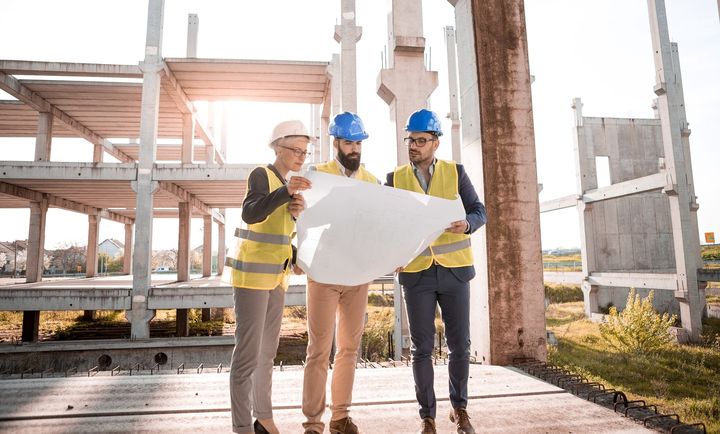
The construction industry is notoriously slow at taking on board new ideas and methodologies. This may sound strange as the great constructors of the past have been at the forefront of innovation and finding new ways to build bigger, more elegant structures. However, the industry has been left behind somewhat in the digital world we live in, and only now are we seeing advances in the use of technology to visualise and create buildings that excite and push the boundaries.
From new start-ups to established architectural, engineering and construction companies, everybody is looking at ways to adopt new ideas to solve age-old problems, which is a challenge for many who may lack the expertise in digitisation.
So, what innovations in digital construction can we expect in this third decade of the 21st Century?
Innovations in the measurement of the site and buildings
When measurements were made using traditional methods and then drawn onto paper by hand, surveys were prone to large margins of error. Thanks to the development of mesh modeling, it is now possible to create 3D models of the site and any buildings on it by using air-born mapping techniques and laser scanning.
Using a point cloud to store and manage the data collected makes it possible to share information amongst the design team in a collaborative environment. Specially developed AEC software then translates this data-set into usable information.
Innovations in visualisation and planning

By digitising the design process, it has become possible to build up augmented reality models that enable stakeholders not only to visualize but also to ‘walk around’ the site or building in a virtual environment.
Investment in this form of AEC software will provide essential information to the design team. By viewing it in this way the designers can see the building in use, see where conflicts occur, and look at options, thus saving time and money on the project.
Changes in the procurement method to facilitate innovation
Digital construction is a holistic approach to design, requiring collaboration from the design team, contractors and the client. One of the reasons why the industry has been slow to adapt is the multi-faceted design process, from the client appointed lead architect and engineer to the contractor appointed trade package designers. The problem has been one of procurement method.
Traditional methods, where the design takes place before appointing a contractor, limits the amount of collaboration between the primary design team and the more specialized designers that the contractor brings along.
Through partnering and other collaborative methods of procurement, it has become possible to involve the contractor from the beginning, thus taking full advantage of the innovations in building techniques to help inform the design further.
Innovations in data collection to create a smart building
Collecting data on the building in use is nothing new, but using that data to change the way the building functions is still in its infancy. How occupants use the building, the flow of movement, vertical and horizontal, how and where people congregate at certain times of day, all affect the way in which the building services operate.
In a smart building, all the core systems are linked and they share information to optimize performance. Heating and cooling are controlled as ambient temperatures change due to variations in occupancy. Lighting changes as it gets darker outside or as rooms become empty. All of this is done automatically, based on the data collected via sensors fitted throughout the building.
Innovations in Building Information Modeling (BIM)
The most important feature of BIM is the ability to create a model that replicates the building. The thing that has been holding this back is the size of the data that can be stored on a computer. With the introduction of cloud-based operating systems, this has taken the data-sets out of the hardware, freeing up space so that only the information required at that time is shown. Middleware software then converts this into smaller files that can easily be shared amongst designers and constructors.
The type of data that can be stored within each component of the model is almost limitless, from cost to health and safety information.
As-built BIM has for many years been a feature of construction projects but the use of AEC software that can help inform the design and the potential for 5D BIM, using wearable devices to provide augmented reality, takes this to a whole new level.
The as-built BIM will also be invaluable when making structural alterations or extensions and eventually taking the whole building apart by providing information on how materials should be handled and how components are put together. Just as the model can show how the structure can be built, it will show how it can be safely dismantled and reconfigured to suit the changing needs of the workplace.
Conclusion
There is no doubt, these are challenging times and there will be far more challenges ahead as the world comes to terms with the effects of the COVID-19 pandemic. With more people working from home, there will be less need to commute to an office, but a greater need to collaborate digitally.
However, the construction industry will always be centred around the project no matter how remote the surveyors and designers may be. Everything will come together on site.
Innovations in digital construction will make adaptations to these changing times much easier in the future.
